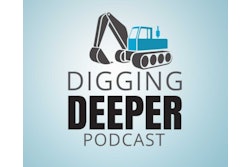
You are probably in the process of closing out 2024 and finishing your game plan, budget and cash flow projections for 2025. You are doing this, right?
Some of your planning was based on your thoughts about the outcome of the election. If so, at least 50% of you got it right. So, seeing that the lower taxes and regulations crowd won, those expecting higher taxes and more regulation will have to quickly redo their plans to avoid falling behind their peers.
Either way, planning for 2025 will not be easy because your options to improve your business are numerous and complicated and, in most cases, will require a new budget item you have not considered until now.
There will be both pros and cons for each decision you need to make. Hopefully, you pick the ones that will benefit your business and, in turn, provide benefits to your customers as well. Before we get to far along, here is a list of issues you need to consider:
- Tax cuts
- Deregulation
- Trade polices
- Infrastructure investment
- Energy policies
- Interest rates
- New labor laws
- Inflation
- Digital and AI requirements
- Energy costs and sources
- New manufacturing, distribution, storage and assembly operations in the U.S.
Which topic should you attack first? Before we go further, I would add one more: personnel levels. Out of the remaining items, I would review taxes, trade policies, interest rates, labor laws, inflation, digital and Al requirements, and others in due time.
Wow, how are you going to get this done without taking six months to do it? While having the ability to review these topics quickly would be great, you do not want to make mistakes because your competitors will take advantage of that, especially if they produce ways to improve their operations starting in February 2025.
To help you get this review and analysis completed in a timely manner, the following will include considerations and suggestions to adjust your 2025 plans and budgets to generate the results needed to cover expenses and debt service requirements.
To help with this, I want you to buy a book titled “Who Not How,” which explains that when you need quick results on business issues, but don’t have the time or expertise to produce industry-specific solutions, you are better off paying for the help you need to get the answers “now,” being provided by a “who” expert.
And, when all is said and done, the cost of using a “who” should pay for itself because you would not have arrived at a solution otherwise until months down the road.
“Who” may be one person or a number of persons. There may be a different “who” for each topic. And since you are in the same boat as a lot of other contractors, you may find it beneficial to get a few folks together and share the cost of the information. You want to take advantage to use these options to reduce costs, lower interest expenses, improve jobsite efficiency and find additional personnel to stay competitive in your market. Let’s review some of the more important items from the list.
Taxes
The Tax Cuts and Jobs Act of 2017 will be extended, which means the lower rates and current deductions remain available. In addition, the estate tax rates remain in place. And since there is a chance that rates could be reduced further, your bottom line income could increase because of lower tax payments.
Federal taxes are one thing. Taxes in the states in which you do business are another. There have been a number of changes on the state side, so make sure to review that you are properly preparing returns for the states in which you do business.
Deregulation
Deregulation should allow you to reduce both the cost of government and operating costs in general. But you must be sure to confirm you are within the law as each opportunity becomes available.
Trade Policies
Tariffs are the main issue, and onshoring is another. This could affect supply chains and increase the cost of foreign-made goods. But it could help increase business generated by the newcomers. I would be careful to ensure your inventory and equipment levels are appropriate, but, at the same time, be careful about front-end loading inventory, which could have a negative impact on your balance sheet and cash flow.
Interest Rates
Expect a continuing reduction in rates. They will be cut until there is a reason not to. Rates should be in the 6% to 7% range. But economic conditions, including inflation and gross domestic product (GDP) growth, do influence interest rates. I would touch base with your bankers to see how they are feeling about your debt structure and the cost of supplying that capital. Try not to overleverage if you can avoid it. Consider renting a piece of equipment that might help with job efficiency.
Labor Laws
Immigration enforcement raids will return. Agency chairs will be replaced. Expect repeal of Biden regulations. But there are new overtime rules, and independent contractor reporting requirements that could get you in trouble if you are not careful. Use your payroll service to review the changes and how to account for them.
Inflation
We could spend a week discussing this topic. Find a “who” to help you out with this, or spend more time reviewing the daily business reports you can get access to. Your chief financial officer (CFO) can do this. But the bottom line is: Inflation is here to stay. If you want a clearer picture about inflation, find a copy of the December-January 2025 issue of Forbes. In Steve Forbes’ column, he explains that there are two kinds of inflation: nonmonetary inflation, caused by major disruptions in production, which the Fed can do nothing about, and monetary inflation, caused by lowering the value of the currency where the Fed may have some way to control. If you could really reduce the inflation that has occurred, the car I bought 50 years ago for a couple thousand dollars would not cost $40,000 today.
With the Federal debt level we have today, rates could increase because of perceived risk factors.
And to add a final issue regarding inflation, think about what you are going to have to pay for personnel who can get the work done. Just be sure not to get carried away with budget adjustments thinking prices are going down. Keep your guard up and protect your cash flow.
Digital and AI Requirements
This is the elephant in the room today and it should go to the top of the list. If you are scheduled to run your business the same way you did last year, I suggest you find a “who” tomorrow to find out what you can do to reduce costs and improve efficiency to stay at a competitive level in your market. We are talking about major improvement requirements.
However, if you are starting this change program already, good for you. After reading a ton of material about what is available for firms in the construction business, I believe that general contractors (GCs) are going to push more of their work to firms who can generate and transfer data digitally, giving them a better chance to finish the job on time and on budget. In other words, who are the GCs going to want to work with going forward? Digital wins. Digital and AI capability is a must today.
The cost of the digital transformation is an important line item you may not have considered up to this point. And if you are not making this change now, you will need a couple of “whos” to get you started with a game plan and budget to start out with.




















